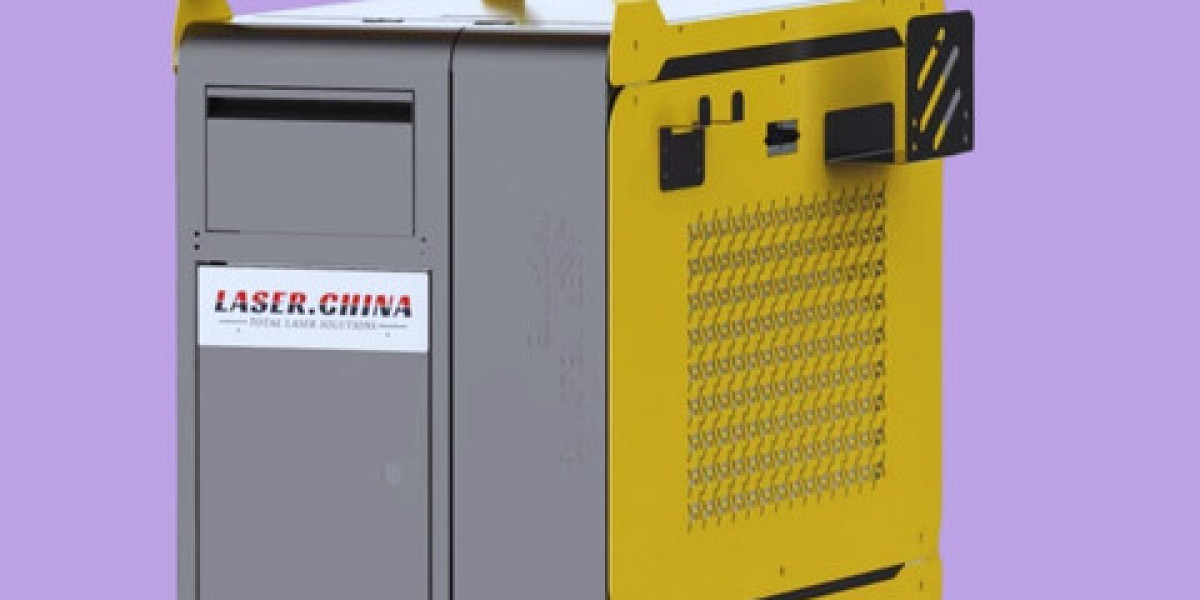Rust cleaning laser, also known as laser rust removal systems, represent a revolutionary approach to tackling rust on metal surfaces. They work by emitting high-powered laser beams that target the rust layer, vaporizing it without causing any harm to the underlying metal. The laser's precision is the key factor that makes it superior to conventional methods. The laser energy is absorbed by the rust layer, causing it to break apart and evaporate, leaving the metal surface beneath clean and unscathed.
This technology has gained widespread popularity across various industries, from automotive to aerospace, from construction to heritage preservation. In this article, we explore the science behind laser rust cleaning, its potential applications, and how it stands out as the ultimate solution for efficient and eco-friendly rust removal.
How Rust Cleaning Lasers Work
To understand how rust cleaning lasers work, it’s essential to delve into the fundamental principles behind laser technology. Lasers emit concentrated light energy in the form of a highly focused beam. When this beam is directed at a rusted surface, it interacts with the rust particles, which are typically iron oxide (Fe2O3). The high energy of the laser heats the rust to such an extent that it vaporizes or ablates, leaving the original surface free of contaminants.
The beauty of rust cleaning lasers lies in their precision. The laser beam can be adjusted in intensity and focus, allowing the operator to tailor the process to the material and the extent of the rust. This precision reduces the risk of damaging the underlying metal, unlike traditional methods, where abrasives or chemicals can sometimes scratch or degrade the surface.
Unlike other methods, lasers don't require any consumables like abrasive materials or chemicals. This not only reduces the ongoing costs associated with rust removal but also contributes to the process’s eco-friendliness. There's no waste generated, and the method produces minimal environmental impact.
A Look at Applications Across Industries
The ability to remove rust quickly, precisely, and without damaging the underlying material makes rust cleaning lasers versatile tools. Let’s take a closer look at the diverse industries benefiting from this cutting-edge technology.
Automotive Industry
In the automotive industry, rust is a major issue, particularly for vehicles exposed to harsh environments or road salt. Traditional methods of rust removal can be labor-intensive, and often, the surfaces need to be repainted after removal, adding time and cost. With rust cleaning lasers, vehicle parts, frames, and body panels can be cleaned quickly without disturbing the paint or the underlying metal.
For example, in the restoration of classic cars, where preserving original parts is paramount, laser rust removal is a game-changer. It allows for the delicate removal of rust without compromising the integrity of the vehicle's metal body.
Aerospace Sector
In the aerospace sector, precision and efficiency are non-negotiable. Aircrafts, both commercial and military, are prone to rust, particularly on their fuselage, landing gear, and internal components. Rust on these critical parts not only affects the appearance but can also compromise structural integrity. Traditional methods of rust removal, such as abrasive blasting, can damage the fine-tuned parts of aircraft. In contrast, rust cleaning lasers offer a highly controlled and effective method for rust removal.
Laser technology can clean corrosion from delicate surfaces without compromising the strength or shape of the components. This is particularly crucial in aerospace, where parts need to adhere to strict safety and performance standards. Rust cleaning lasers also reduce downtime, as they are faster and more efficient compared to traditional methods.
Manufacturing and Industrial Applications
For manufacturers, rust can accumulate on machinery, conveyor belts, and other equipment, reducing their efficiency and lifespan. In heavy industries, where machinery parts are often expensive and vital to production processes, rust cleaning lasers offer a more cost-effective and efficient solution.
By using a rust cleaning laser, industrial companies can prolong the lifespan of their equipment while minimizing the maintenance costs associated with traditional rust removal methods. It also reduces the frequency of downtime, ensuring continuous production flow.
Heritage and Restoration Work
For the conservation of historical artifacts, monuments, and heritage buildings, rust cleaning lasers have proven invaluable. Rust on steel structures, such as bridges or statues, can significantly detract from the integrity of historical sites. The traditional abrasive methods used for rust removal can cause irreparable damage to these cultural treasures, but laser technology provides a safer, more efficient option.
Lasers can be used to remove rust from delicate statues or metal panels without damaging the surrounding material. This makes laser rust removal an essential tool for conservators working to preserve our cultural heritage.
Environmental Impact: Eco-Friendly Rust Removal
One of the most compelling reasons why rust cleaning lasers are considered the ultimate solution for rust removal is their eco-friendliness. Traditional methods of rust removal often involve the use of chemicals, abrasives, or solvents, all of which have negative environmental impacts. Chemical rust removers can release toxic fumes and pollutants into the air, while abrasives create waste that needs to be disposed of.
In contrast, laser rust cleaning is a dry process with no need for chemical agents or consumables. The only byproduct is the rust that is vaporized and removed. There is no chemical residue, and no waste is left behind. This makes laser rust removal not only a more efficient solution but also a much cleaner and greener alternative.
Furthermore, because the process is so precise, it reduces the risk of overuse of resources, which is common with other methods. With no need for abrasive materials, there is less waste produced, and the process uses only the energy needed to target the rust. This aligns perfectly with growing demands for sustainability in industrial operations.
Cost-Effectiveness and Long-Term Benefits
While the initial investment in a rust cleaning laser system may be higher compared to traditional methods, the long-term savings are undeniable. As mentioned, rust cleaning lasers require no consumables, which significantly reduces operating costs. Moreover, the speed and precision of the process ensure that rust can be removed more quickly, reducing downtime and increasing productivity.
For businesses that need to regularly clean rust from equipment or infrastructure, the long-term savings in maintenance and labor costs are substantial. Rust cleaning lasers offer an upfront investment that pays for itself over time.
Final Thoughts
Rust cleaning laser are rapidly becoming the go-to solution for industries seeking to combat rust in an efficient, precise, and environmentally friendly manner. From automotive restoration to aerospace, manufacturing to heritage conservation, laser rust removal is proving its versatility and value. By offering a method that eliminates the need for harmful chemicals, reduces waste, and provides superior precision, rust cleaning lasers are not just a passing trend but a critical tool in modern metal maintenance.
The technology’s ability to offer fast, effective rust removal without compromising the integrity of underlying materials has made it a revolutionary advancement. As industries around the world continue to prioritize sustainability and efficiency, it is clear that rust cleaning lasers will continue to play a significant role in metal upkeep and restoration.



